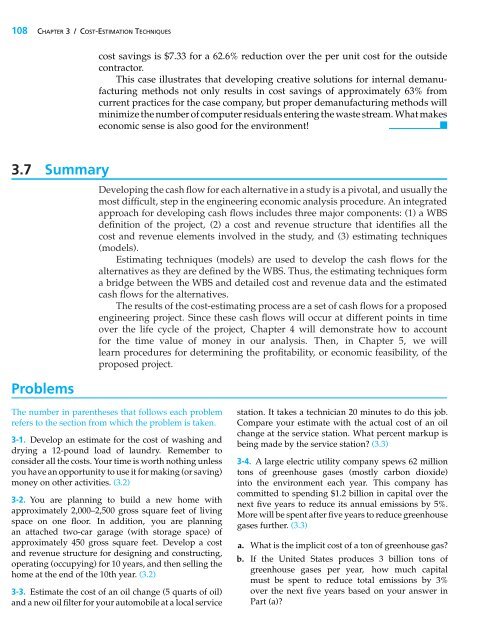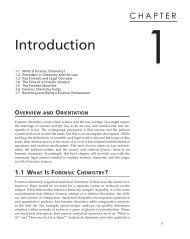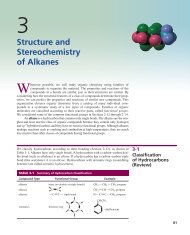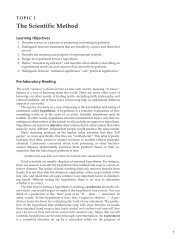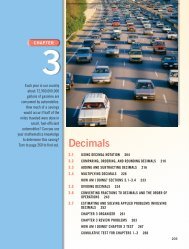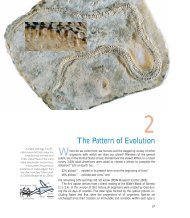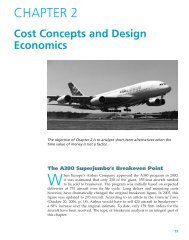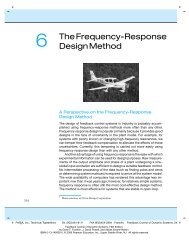CHAPTER 3 - Educators
CHAPTER 3 - Educators
CHAPTER 3 - Educators
Create successful ePaper yourself
Turn your PDF publications into a flip-book with our unique Google optimized e-Paper software.
108 <strong>CHAPTER</strong> 3/COST-ESTIMATION TECHNIQUES<br />
3.7 Summary<br />
Problems<br />
cost savings is $7.33 for a 62.6% reduction over the per unit cost for the outside<br />
contractor.<br />
This case illustrates that developing creative solutions for internal demanufacturing<br />
methods not only results in cost savings of approximately 63% from<br />
current practices for the case company, but proper demanufacturing methods will<br />
minimize the number of computer residuals entering the waste stream. What makes<br />
economic sense is also good for the environment!<br />
Developing the cash flow for each alternative in a study is a pivotal, and usually the<br />
most difficult, step in the engineering economic analysis procedure. An integrated<br />
approach for developing cash flows includes three major components: (1) a WBS<br />
definition of the project, (2) a cost and revenue structure that identifies all the<br />
cost and revenue elements involved in the study, and (3) estimating techniques<br />
(models).<br />
Estimating techniques (models) are used to develop the cash flows for the<br />
alternatives as they are defined by the WBS. Thus, the estimating techniques form<br />
a bridge between the WBS and detailed cost and revenue data and the estimated<br />
cash flows for the alternatives.<br />
The results of the cost-estimating process are a set of cash flows for a proposed<br />
engineering project. Since these cash flows will occur at different points in time<br />
over the life cycle of the project, Chapter 4 will demonstrate how to account<br />
for the time value of money in our analysis. Then, in Chapter 5, we will<br />
learn procedures for determining the profitability, or economic feasibility, of the<br />
proposed project.<br />
The number in parentheses that follows each problem<br />
refers to the section from which the problem is taken.<br />
3-1. Develop an estimate for the cost of washing and<br />
drying a 12-pound load of laundry. Remember to<br />
consider all the costs. Your time is worth nothing unless<br />
you have an opportunity to use it for making (or saving)<br />
money on other activities. (3.2)<br />
3-2. You are planning to build a new home with<br />
approximately 2,000–2,500 gross square feet of living<br />
space on one floor. In addition, you are planning<br />
an attached two-car garage (with storage space) of<br />
approximately 450 gross square feet. Develop a cost<br />
and revenue structure for designing and constructing,<br />
operating (occupying) for 10 years, and then selling the<br />
home at the end of the 10th year. (3.2)<br />
3-3. Estimate the cost of an oil change (5 quarts of oil)<br />
and a new oil filter for your automobile at a local service<br />
station. It takes a technician 20 minutes to do this job.<br />
Compare your estimate with the actual cost of an oil<br />
change at the service station. What percent markup is<br />
being made by the service station? (3.3)<br />
3-4. A large electric utility company spews 62 million<br />
tons of greenhouse gases (mostly carbon dioxide)<br />
into the environment each year. This company has<br />
committed to spending $1.2 billion in capital over the<br />
next five years to reduce its annual emissions by 5%.<br />
More will be spent after five years to reduce greenhouse<br />
gases further. (3.3)<br />
a. What is the implicit cost of a ton of greenhouse gas?<br />
b. If the United States produces 3 billion tons of<br />
greenhouse gases per year, how much capital<br />
must be spent to reduce total emissions by 3%<br />
over the next five years based on your answer in<br />
Part (a)?


